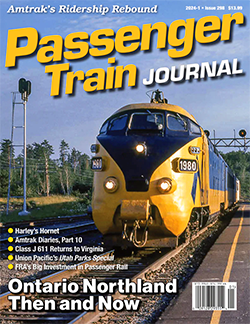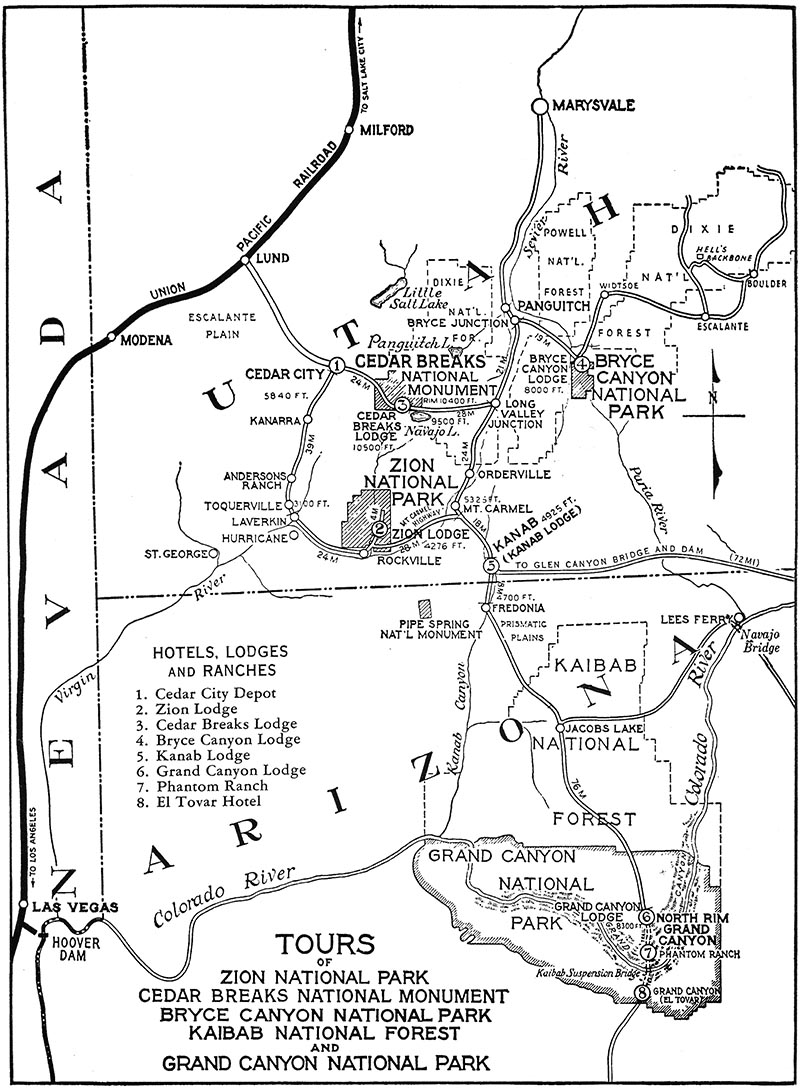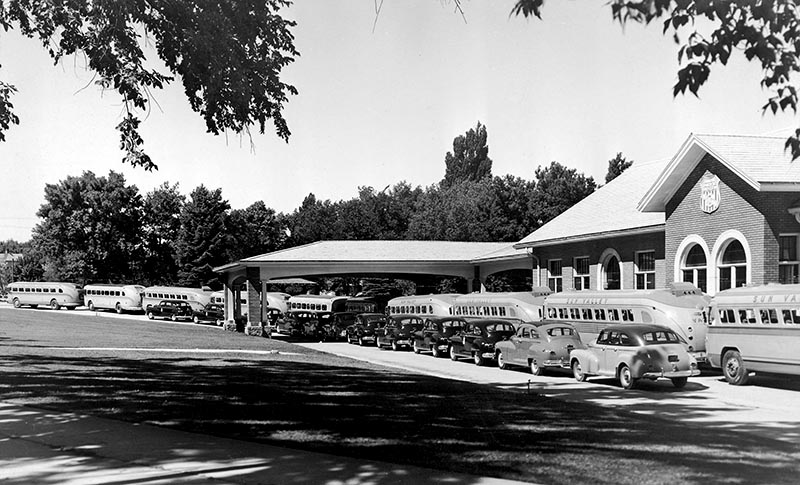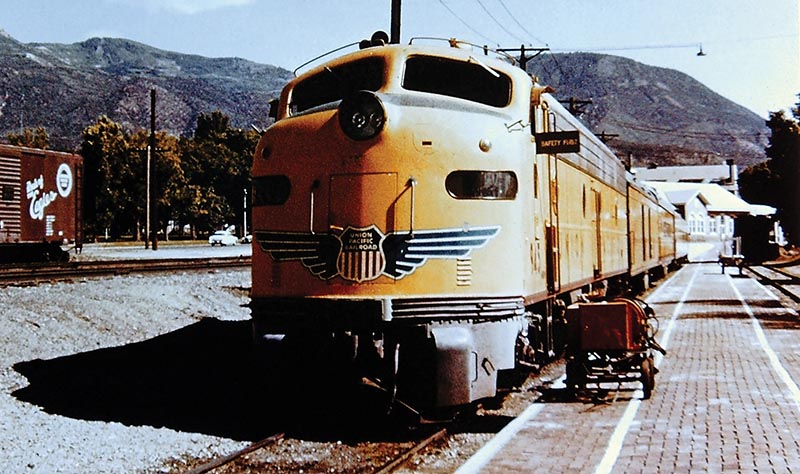 by Thornton Waite/photos as noted
by Thornton Waite/photos as noted
The nation’s railroads once ran seasonal trains in the summer and winter months, serving many parts of the United States. The Utah Parks Special, a Union Pacific (UP) train that ran between Salt Lake City and Cedar City, Utah, was one of these seasonal trains.
It was a relatively unknown operation, launched in 1923 and running only in the summer months to take tourists to the newly established national parks in southern Utah, but it fell victim to the Depression and World War II. Reinstated after the war, the train struggled to compete with the automobile and was discontinued for the second, and final, time at the end of the 1960 season. Coincidentally, that was the same year UP’s Yellowstone Special to West Yellowstone and Yellowstone National Park was discontinued. The Utah Parks Special should not be confused with Union Pacific’s National Parks Special, which ran between Chicago and Denver in 1940 and 1949-55.
Union Pacific and its subsidiary, the Utah Parks Company, were directly responsible for development of the national parks in southern Utah. Bryce, Zion, and the North Rim of the Grand Canyon, as well as Cedar Breaks, were all accessible via UP’s new branch line to Cedar City. The two companies worked together to develop and promote travel to, and with-in, the scenic areas and parks in southern Utah. The first segment of the journey was UP’s Utah Parks Special from Salt Lake City to Cedar City. In conjunction with this train, UP’s Utah Parks Company subsidiary provided road transportation from Cedar City to and through the parks, and provided lodging and dining facilities for tourists during their stays.

A railroad to Cedar City
Cedar City, Utah, is located in Iron County in the southwestern part of the state, 33 miles east of the Union Pacific main line between Salt Lake City and Los Angeles, and roughly 250 miles south of Salt Lake City. The town received its name for the large stands of cedar trees in the valley, and it was initially settled to develop the iron ore from the nearby mines.
The history of the railroad to Cedar City dates back to the 1870s, when the Utah Southern Railroad Company was building south from Salt Lake City. On September 15, 1873, the Iron Mountain & Utah Valley Railroad Company was incorporated to go north from Iron City to a connection with Utah Southern at or near Payson, south of Salt Lake City. Little or no work was performed on this line.

ABOVE: A line of buses and cars at Cedar City. Based on the shadows, the Utah Parks Special is about to arrive. The buses are lettered for Sun Valley, another UP venture that needed buses in the winter for the arriving skiers. The railroad maximized the vehicles’ utilization by moving them among its tourist destinations. —Southern Utah University
On December 29, 1874, the Utah Southern Railroad Extension was chartered to extend a railroad line from Utah Southern Railroad through Iron County to a location south of Cedar City. The new line would not have been routed through Cedar City, although it would have run near the town. Some surveys were performed, but no further work was per-formed on this line, either.
Cedar City Terminal Railway was the next line proposed to reach Cedar City. In 1884, 22 miles of rails and other equipment were purchased and moved to Cedar City by ox team. Some grading was performed that summer toward the coal mines east of Cedar City, but no further work was done.
When Los Angeles & Salt Lake Rail-road (LA&SL) built its line between Los Angeles and Salt Lake City at the beginning of the 20th century, it bypassed Cedar City. The railroad reached a location designated as Cedar City Junction, 37 miles south of Milford, on January 24, 1899, and this was the nearest railroad stop to Cedar City. The railroad announced that a branch was planned, to be built from Cedar Junction east to Cedar City, but no construction took place at this time. When the LA&SL line was severely damaged by floods in 1910, a route closer to Cedar City was briefly considered and surveyed, but the existing main line was rebuilt instead…



